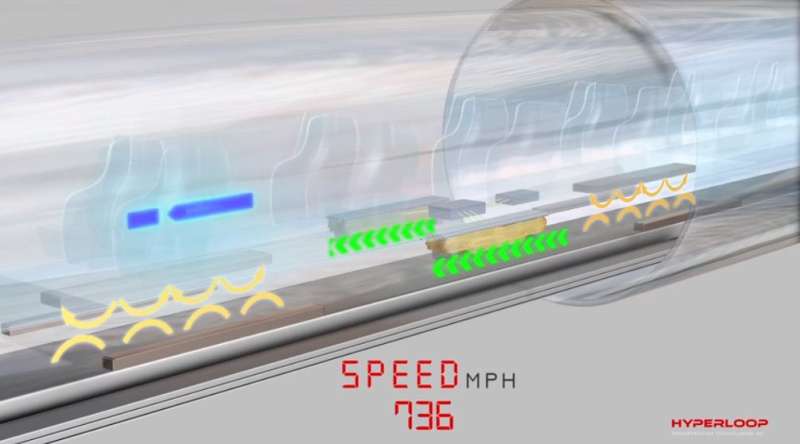May 11, 2016 weblog
Hyperloop Transportation Technologies highlighting passive magnetic levitation

Hyperloop Transportation Technologies on Monday announced their technology approach to bring a transport levitation system to fruition. They are using something called passive magnetic levitation.
They have been working with the Lawrence Livermore National Lab on this and HTT has now exclusively licensed the system from the Livermore lab for the Hyperloop application. Could this be a transport levitation system that will cut costs, save time and preserve energy?
Those are admirable goals and a confident HTT provided information about their efforts in a video posted on May 8. (Ars Technica provided some background information on their work, saying HTT's magnet-and-coil setup which they used had its roots at Lawrence Livermore Lab in the 1990s. The system was invented by the late Dr. Richard F. Post.)
Some of the points raised in the video:
Maglev trains need expensive infrastructure. [Maglev refers to a transport mode using magnetic levitation without touching the ground with electrically charged magnets lifting and moving the train above the tracks.] Their system involves a "Halbach array," specially arranged rows of permanent magnets. (The MAGCRAFT information blog defines a Halbach array as "a specific arrangement of a series of permanent magnets. The array has a spatially rotating pattern of magnetism which cancels the field on one side, but boosts it on the other. The main advantages of Halbach arrays are that they can produce strong magnetic fields on one side whilst creating a very small stray field on the opposite side.")
Megan Geuss, staff editor at Ars Technica, said in their approach, magnets are placed on the underside of the passenger train in the Halbach arrangement, focusing the magnetic field of a set of magnets on one side of the array while canceling out the field on the other side. "Those magnetic fields under the train cause it to levitate as it passes over non-powered electromagnetic coils on the rail beneath the train at even low speeds created by an electric motor."
Philip Ross in IEEE Spectrum also shed light on how this all works: "The passive levitation system, called Inductrack, was developed in the 1990s at Lawrence Livermore National Labs, in California. It works by lining the bottom of the pod with permanent magnets, placed in a so-called Halbach array so as to induce a repelling field when they pass over shorted, that is, non-powered, electromagnetic coils on the railbed. Because the maglev effect is passive, any power cutoff would both slow the pod and cause it to settle down on the track."
Dirk Ahlborn, the CEO and founder of HTT, told IEEE Spectrum that this passive levitation method saves energy and trouble as "this allows us to achieve levitation without having power stations all along the track."
A passive levitation system will eliminate the need for power stations along the Hyperloop track, and it will keep construction costs low, added Bibop Gresta, COO of Hyperloop Transportation Technologies. Gresta said yet another plus in their tech was safety.
"From a safety aspect, the system has huge advantages, levitation occurs purely through movement, therefore if any type of power failure occurs, Hyperloop pods would continue to levitate and only after reaching minimal speeds touch the ground."
A variety of organizations are currently racing to produce a working Hyperloop, noted Ars Technica.
More information: hyperlooptransp.com/
© 2016 Tech Xplore




















